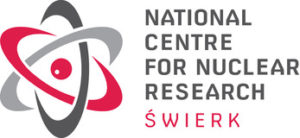About
Despite the difficulties caused by the pandemic slowing down the international collaboration and in-person contacts, the investigations of SHEs and publishing new results were continuing. As we can not meet during any conference we have decided to create a series of virtual talks dedicated to the research on super heavy nuclei (SHE).
We would like to focus on the results achieved and/or published after Hakone Symposium held in December 2019. The speakers of the younger generation are very welcome.
Scientific scope of Virtual SHE Seminars:
The discovery of superheavy elements poses many fundamental questions in the physics and chemistry of super heavy nuclei and elements:
- How many protons and neutrons a nucleus can hold?
- What is the most effective way to synthesize even heavier nuclei and new elements?
- Where are the limits of the Island of Stability and of Periodic Table?
- How can be developed and unified description of nuclear properties for SHN?
- What are the effects of the strongest Coulomb fields on atomic properties?
- Can we understand the spontaneous fission process of SHN competing with other decay modes?
- How superheavy atoms and nuclei differ from lighter species?
- What is the extent of the region of shell-stabilized SH nuclei?
- What is the best method to produce and study new SH nuclei?
- What are the properties of the ground and excited states of SH nuclei?
- What are the atomic and chemical properties of SHE?
- Can SH nuclei be formed in the Cosmos?
New powerful laboratories including the Super-Heavy Element Factory at Dubna and SPIRAL-II facility at GANIL as well as upgrades at RIKEN and other facilities under consideration together with neutron-rich actinide targets and possibly radioactive isotope beams and improved separation and detection methods can help us answer these questions and continue the discoveries at the top of nuclear and atomic worlds. The support that theory /modeling can offer will also be discussed.
The virtual seminar series will address these topics and help define a strategy for successful expansion of our understanding of the heaviest isotopes and atomic elements.
Organizers
Greg Chubarian; gchubar@tamu.edu; Texas A&M Univesity, USA
Michal Kowal; michal.kowal@ncbj.gov.pl; National Centre for Nuclear Research, POLAND
Hiromitsu Haba; haba@riken.jp; RIKEN Nishina Center for Accelerator-Based Science, JAPAN
Michal Warda; michal.warda@umcs.pl Maria Curie-Skłodowska University, POLAND


